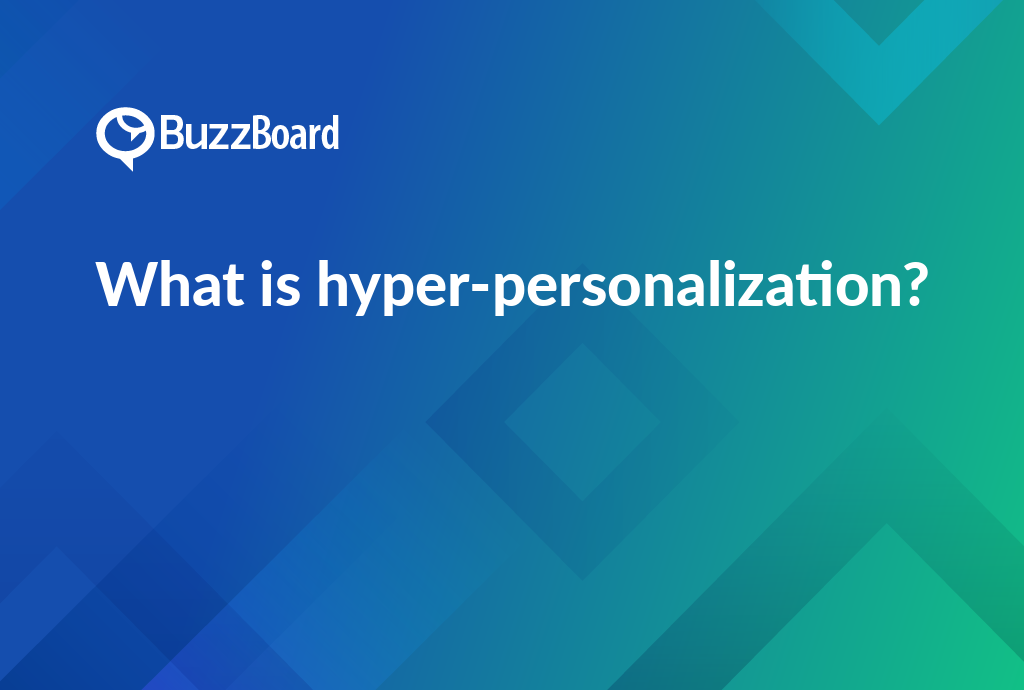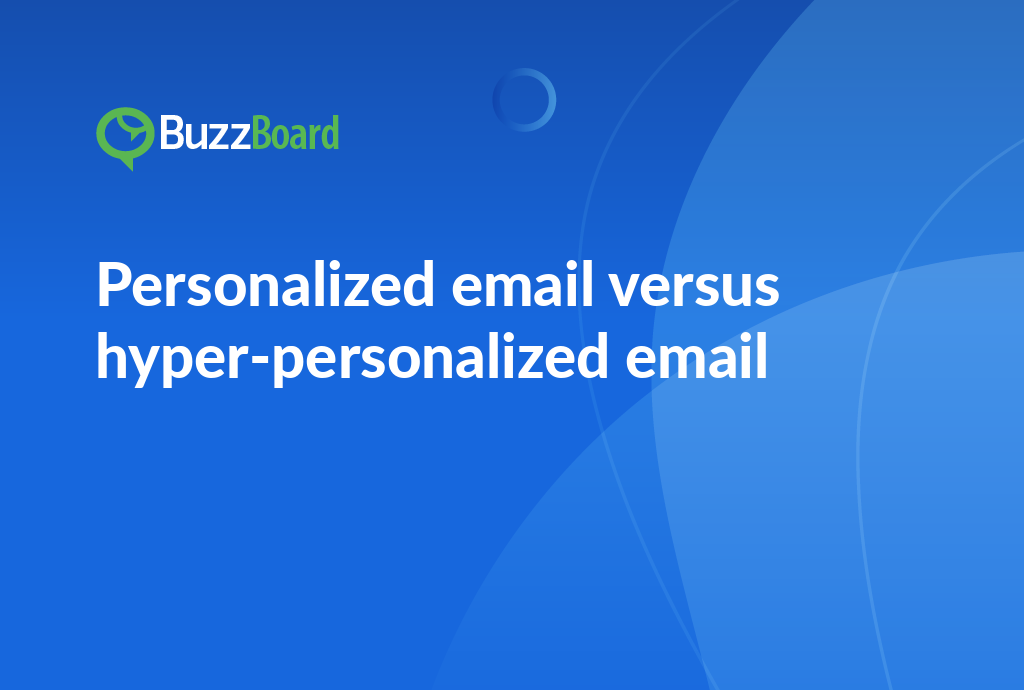What is hyper-personalization? Hyper-personalization is a marketing strategy that uses advanced data analytics and AI to deliver highly tailored and relevant experiences to individual customers. By combining data from various sources, including customer behavior, preferences, and demographics, businesses can create personalized messages, offers, and content that resonate with each customer’s unique needs and interests. This approach enables companies to build stronger relationships, increase customer loyalty, and drive conversions. Learn more about the benefits and applications of hyper-personalization in this article.
Understanding the Concept of Hyper-Personalization in the Context of Digital Marketing
In the rapidly evolving realm of digital marketing, hyper-personalization emerges as a game changer. So, what is hyper-personalization in the context of digital marketing? It is the evolution of personalization that utilizes real-time data to provide more relevant, targeted content, products, and services to each individual user.
Don’t confuse it with the historical concept of personalization, which often limits modifications to an audience’s name or location. Modern digital marketing trends demand a more tailored outreach approach. When comparing personalization with hyper-personalization, the difference is night and day. The latter delves far deeper than simply addressing customers by their first names in email campaigns.
Hyper-personalization is a game-changer in the world of digital marketing, as it enables businesses to understand user behavior on an unprecedented level. By tracking and analyzing a vast array of data points, including browsing history, past purchases, interactions with the brand, and even social media activity, companies can provide customers with highly relevant content and offers that resonate deeply with their individual needs and preferences. This targeted approach boosts customer engagement and relatability, potentially leading to a significant increase in conversion rates and customer loyalty.
The evolution from personalization to hyper-personalization marks a significant shift from generalized to individual-focused advertising. Gone are the days of blanket marketing campaigns that fail to resonate with specific audience segments. Instead, businesses must adapt to a more nuanced approach that takes into account the unique characteristics, behaviors, and preferences of each individual customer.
For sales representatives, understanding hyper-personalization is no longer a nice-to-have, but a must-have skill. It requires collaboration with marketing teams to integrate hyper-personalization into digital strategies, ensuring that every touchpoint, from email campaigns to social media ads, is tailored to the individual customer’s needs. This demands a deep understanding of data analysis, customer segmentation, and content creation, as well as the ability to adapt quickly to changing customer behaviors and preferences.
A robust data collection and analysis system is essential for effective hyper-personalization strategies. This involves leveraging advanced technologies such as machine learning, artificial intelligence, and data visualization to process and analyze vast amounts of data in real-time. By doing so, businesses can deliver the right message to the right customer at the right time, increasing the likelihood of conversion and driving long-term customer loyalty.
Staying ahead of the curve is crucial for delivering optimal digital marketing services. This requires ongoing education and training in the latest personalization tactics, as well as a willingness to experiment and adapt to new technologies and trends. By embracing hyper-personalization and staying one step ahead of the competition, businesses can build stronger relationships with their customers, drive growth, and achieve long-term success.
The Key Difference Between Personalization and Hyper-Personalization: A Comparative Study
Personalization is a crucial component of any effective marketing strategy, particularly for small and local businesses. However, there is a significant difference between traditional personalization and hyper-personalization. While traditional personalization involves tailoring messages to fit broad user profiles, hyper-personalization takes it to the next level by using real-time data to shape outreach to individual consumers.
The key distinction between the two lies in their approach. Traditional personalization targets wide segments of the population, such as all customers within a particular age group or geographic area. In contrast, hyper-personalization dives deep into individual customer behavior, preferences, and buying history. This granular approach enables businesses to create contextually pertinent experiences that boost customer engagement and loyalty.
The shift towards hyper-personalization is of immense value, as it allows businesses to craft customized interactions that make customers feel appreciated and valued. By leveraging rich data, businesses can aim advertisements with extreme precision, increasing the likelihood of conversion and driving business growth. Moreover, hyper-personalization enables businesses to build stronger relationships with their customers, fostering loyalty and retention.
To successfully implement hyper-personalization, sales representatives at digital marketing agencies must invest in smart tools that can integrate and examine consumer data flawlessly. This data-oriented strategy requires a deep understanding of consumer behavior, preferences, and buying patterns. By analyzing this data, businesses can identify patterns and trends that inform their marketing efforts, making them more targeted, customer-centric, and effective.
The benefits of hyper-personalization are numerous. For instance, it enables businesses to:
- Create highly targeted and relevant advertisements that resonate with individual customers
- Craft personalized messages that speak directly to customers’ needs and preferences
- Offer tailored recommendations and offers that increase the likelihood of conversion
- Build stronger relationships with customers, fostering loyalty and retention
- Drive business growth by increasing customer engagement and satisfaction
To get started with hyper-personalization, sales representatives must embark on a journey of discovery, exploring the latest tools and technologies that can help them integrate and analyze consumer data. This may involve:
- Investing in customer relationship management (CRM) software that can track customer interactions and behavior
- Utilizing data analytics tools that can help businesses identify patterns and trends in consumer behavior
- Implementing marketing automation software that can help businesses automate and personalize their marketing efforts
- Developing a data-driven mindset that prioritizes customer insights and feedback
By embracing hyper-personalization, sales representatives can elevate their marketing prowess and drive business growth. It’s a journey that requires a deep understanding of consumer behavior, a willingness to experiment and adapt, and a commitment to delivering exceptional customer experiences.
The Evolution of Personalization into Hyper-Personalization: Unpacking the Trend
Hyper-personalization represents the pinnacle of personalization in marketing, leveraging advanced data-driven approaches to deliver tailored experiences that resonate with individual customers. This sophisticated approach is particularly beneficial for small and local businesses, as it enables them to craft each aspect of their marketing strategy to fit the unique preferences of their target audience. From message customization to tailored outreach, hyper-personalization empowers businesses to create a seamless and relevant customer journey that fosters loyalty and drives conversions.
The shift from personalization to hyper-personalization is largely driven by the rapid advancements in technology and the increased availability of consumer data. This has enabled marketers to deliver finely tuned, audience-specific content that speaks directly to the needs and interests of their target audience. However, hyper-personalization is more than just a simple substitution of a customer’s name in a generic message. It involves a deep dive into individual behavior patterns, preferences, and real-time interactions, leveraging algorithms and real-time data to deliver relevant content, product recommendations, and service offers that are tailored to each customer’s unique profile.
Understanding the distinction between personalization and hyper-personalization is crucial for digital marketing sales representatives, as it enables them to develop nuanced strategies that go beyond simply identifying customers by name. By incorporating a range of tactics, such as location-based offerings, predictive analysis, and behavioral data, sales representatives can create a more comprehensive and personalized customer experience. This may involve using location-based data to offer customers relevant promotions and discounts, or using predictive analysis to anticipate their needs and preferences.
To implement hyper-personalization effectively, sales representatives must be able to efficiently mine available customer data, apply advanced interpretation algorithms, and consistently test their strategies for ongoing optimization. This requires a deep understanding of data analysis and interpretation, as well as the ability to identify patterns and trends in customer behavior. By leveraging these insights, businesses can create a resilient, fully personalized customer experience that boosts engagement levels, drives conversions, and improves bottom lines.
The benefits of hyper-personalization are numerous, and can include:
- Increased customer engagement and loyalty
- Improved conversion rates and sales
- Enhanced customer satisfaction and retention
- Increased brand awareness and reputation
- Better customer insights and data analysis
- Improved marketing ROI and efficiency
By adopting a hyper-personalization strategy, small and local businesses can differentiate themselves from larger competitors and establish a strong presence in their market. By delivering tailored experiences that resonate with individual customers, businesses can build strong relationships, drive loyalty, and ultimately, drive growth and success.
How Customizing Messages and Tailored Outreach Play Crucial Roles in Hyper-Personalization
Hyper-personalization is a cutting-edge marketing approach that leverages the power of artificial intelligence (AI) and real-time data to deliver tailored content, product details, and service information to each individual customer. This sophisticated level of personalization goes beyond simply addressing customers by their first name, instead taking into account their unique preferences, behavior, and real-time data to cater to their specific needs and interests.
The evolution from personalization to hyper-personalization is largely driven by technological advancements and the increasing availability of data collection methods. Hyper-personalization involves more than just customer segmentation, focusing entirely on the individual through tailored messaging based on their needs, interests, and behavioral patterns. This approach requires a deep understanding of consumer behavior and a thorough analysis of their interactions with your brand.
One of the key benefits of hyper-personalization is its ability to create content that is personalized to a customer’s current position in the purchasing process. For instance, if a customer has shown interest in a specific product on your website, a follow-up email with a discount code can notify them that the product they are interested in is still available. This type of messaging is highly effective in moving customers through the sales funnel and increasing conversions.
To apply hyper-personalization effectively, it’s essential to have a robust understanding of consumer behavior and a data-driven approach to marketing. This involves collecting and analyzing large amounts of data on customer interactions, preferences, and behavior, and using this information to create targeted and personalized messaging.
By leveraging hyper-personalization in your marketing strategies, you can enhance interactions, improve customer experiences, and boost sales. Today’s customers expect personalized, relevant experiences, and failing to deliver can lead to lost sales and a negative brand reputation.
To get started with hyper-personalization, it’s essential to utilize your client data and tailored outreach strategies. This may involve segmenting your email list based on customer behavior, creating targeted ad campaigns, and using chatbots to provide personalized customer service.
In addition to improving customer experiences, hyper-personalization can also help to increase customer loyalty and retention. By providing customers with personalized content and offers, you can create a sense of exclusivity and make them feel valued and appreciated.
Hyper-personalization is a powerful marketing approach that can help businesses to stand out in a crowded market and deliver exceptional customer experiences. By leveraging AI, real-time data, and a deep understanding of consumer behavior, you can create tailored messaging that resonates with your target audience and drives results. As the marketing landscape continues to evolve, it’s essential to stay ahead of the curve and adopt the latest technologies and strategies to stay competitive.
The Impact of Hyper-Personalization on Customer Engagement: A Deep Dive
Hyper-personalization has revolutionized the way businesses engage with their customers, taking personalization to the next level. But what exactly is hyper-personalization? Unlike basic personalization, which may simply involve addressing a customer by name, hyper-personalization leverages advanced data analytics and machine learning algorithms to create highly customized messages that resonate with each individual customer. This cutting-edge approach tailors outreach efforts to align seamlessly with the recipient’s unique needs, preferences, and behaviors, making it a game-changer for businesses looking to build strong, lasting relationships with their customers.
In contrast to traditional personalization techniques, which may only address a customer by name, hyper-personalization customizes the entire message, taking into account the customer’s previous transactions, browsing history, and responses to previous outreach efforts. This level of personalization is not just about knowing a customer’s name; it’s about understanding who they are as a consumer, what they want, and what they need. By leveraging this level of insight, businesses can create highly targeted and relevant messages that speak directly to each customer’s interests and concerns.
For small and local businesses, incorporating hyper-personalization techniques into their digital marketing campaigns can be a powerful way to increase customer engagement and drive loyalty. When customers receive personalized messages that are tailored to their unique needs and interests, they are more likely to respond positively, viewing these messages as more relevant and valuable. This, in turn, can lead to increased conversions, customer retention, and ultimately, revenue growth.
As a sales representative at a digital marketing agency, it’s essential to emphasize the benefits of hyper-personalization to your small or local business clients. By highlighting how this approach exceeds traditional personalization and how your agency can help them create tailored messages that resonate with their target audience, you can position your agency as a trusted partner in their marketing efforts. By doing so, you can improve your sales game and help your clients achieve their marketing goals.
Some key points to emphasize when pitching hyper-personalization to small or local business clients include:
- The ability to create highly targeted and relevant messages that speak directly to each customer’s interests and concerns
- The potential to increase customer engagement and drive loyalty through personalized outreach efforts
- The ability to leverage advanced data analytics and machine learning algorithms to create highly customized messages
- The potential to exceed traditional personalization techniques and create a more personalized experience for customers
- The ability to help small and local businesses stand out in a crowded market and differentiate themselves from competitors
By emphasizing these benefits and highlighting the unique value proposition of hyper-personalization, you can help your clients achieve their marketing goals and drive business results.
Conclusion
In conclusion, hyper-personalization is a game-changing marketing strategy that has the potential to revolutionize the way businesses interact with their customers. By leveraging advanced data analytics and AI, companies can create highly tailored and relevant experiences that resonate with each customer’s unique needs and interests.
As we’ve seen, hyper-personalization offers a wide range of benefits, from increased customer engagement and loyalty to improved conversion rates and revenue growth. But to achieve these benefits, businesses must be willing to invest in the technology and infrastructure needed to support this approach.
By adopting a hyper-personalization strategy, businesses can build stronger relationships with their customers, stay ahead of the competition, and drive long-term growth and success. As the marketing landscape continues to evolve, it’s clear that hyper-personalization will play a key role in shaping the future of customer experience.
So, what’s the next step for your business? Start exploring the possibilities of hyper-personalization today and discover a new way to connect with your customers and drive business results.
Additional Resources
What are the best tools for hyper-personalization of sales engagement?
What industries benefit most from hyper-personalization?
What are the challenges of hyper-personalization?









